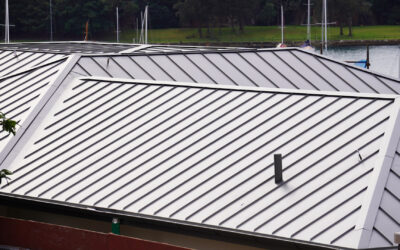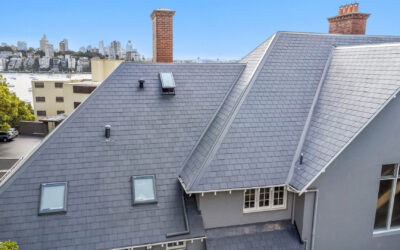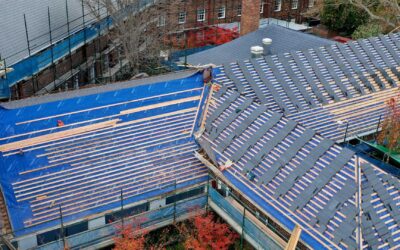Cedar Shingles: History and Benefits to Architecture Today
The History of Cedar Shingles Roofing
Cedar shingles have a long and storied history dating back centuries. These thin, wedge-shaped pieces of wood have been used as a durable and attractive roofing material in various cultures and regions worldwide. So let’s take a trip through time to explore the fascinating history of cedar shingles.
Ancient Origins. The use of wood for shelter dates back thousands of years, and early civilizations discovered the benefits of using cedar for roofing. Ancient middle eastern times, for example, used cedar wood to create waterproof roofs for their temples and palaces. Cedar’s natural resistance to decay, insect infestation, and moisture made it an ideal choice for protecting structures from the elements.
European Influence. The use of cedar shingles in Europe can be traced back to the 12th century. Cedar shingles were commonly used as a roofing material for homes and other buildings in regions with abundant cedar forests, such as Scandinavia, the British Isles, and parts of Eastern Europe. They were hand-split from cedar logs using traditional tools and techniques, resulting in unique and durable roofing solutions.
Colonial America. As European settlers arrived in North America, they brought with them the tradition of using cedar shingles for roofing. In the 17th and 18th centuries, cedar shingles became a popular choice for homes in the American colonies due to the availability of cedar trees in the region. Early American settlers would hand-split cedar logs into shingles and use them to roof their houses, barns, and churches.
Industrial Revolution. With the advent of the Industrial Revolution in the 19th century, the production of cedar shingles underwent a significant transformation. Steam-powered sawmills and other machinery were introduced, making the process of cutting cedar shingles more efficient and cost-effective. This led to increased cedar shingles’ availability and wider use as a roofing material across North America.
Arts and Crafts Movement. In the late 19th and early 20th centuries, the Arts and Crafts Movement, which emphasized craftsmanship and natural materials, popularized cedar shingles as a roofing material for homes. Architects and designers of the time appreciated the rustic, natural beauty of cedar shingles. As a result, they were often used in constructing craftsman-style homes, adding to their enduring appeal.
Modern Usage. Today, cedar shingles continue to be a popular choice for roofing in many parts of the world. Cedar’s natural resistance to decay, insect infestation, moisture, and attractive appearance make it a sought-after material for residential and commercial roofing applications. Cedar shingles are available in various styles, including traditional sawn shingles, hand-split shingles, and machine-cut shingles, catering to different architectural styles and design preferences.
Western Red Cedar Shingles
They are made from the wood of the Western Red Cedar tree, which is a species native to the western parts of North America.
Western Red Cedar shingles are known for their natural beauty, durability, eco-friendly, and versatility. They have been used in building construction for centuries and are renowned for their distinctive appearance and exceptional performance in various weather conditions. Whether on historic homes or modern structures, cedar shingles remain a timeless choice for roofing applications that have stood the test of time.
Why you should consider Western Red Cedar shingles for your next roofing project
Durability. Western Red Cedar shingles have high impact resistance and won’t easily crack, warp, or split during severe weather. This resilience and strength make them ideal for use in areas that experience frequent weather changes. They are exceptionally durable and can last up to 50 years when maintained properly. In addition, the natural oils in the wood help protect against decay and insect infestation, providing longevity without any harsh chemical treatment.
Aesthetically Pleasing. Western Red Cedar shingles provide natural beauty, an attractive texture, and architectural depth that looks striking anywhere. Stunning hues ranging from dark brown and light brown to almost reddish hues or natural cedar wood can be used in various contexts, from contemporary to rustic, whether you’re building a home or garden structure or adding rustic notes to your existing property.
Insulation. Western Red Cedar shingles provide excellent insulation properties. Their small size and thickness help ensure enhanced insulation due to air gaps that help maintain a constant temperature inside your home, from the warmth of a wood stove to the refreshing cool of your air-conditioner.
Pest Resistance. Western Red Cedar shingles are naturally insect-repellent, offering superior protection against pests. Cedar wood contains natural oils that help to make it resistant to pests and mildew. This can be essential for homeowners who live in areas prone to humidity-loving insects, such as termites.
Cost-Effective. Although the initial installation cost of Western Red Cedar shingles may be higher than other materials, their low maintenance and long-lasting properties make them a more cost-effective option over their lifetime. They also prevent heat loss, reducing the energy required to heat your home.
Add Value to Your Property. Western Red Cedar shingles are a high-end material associated with quality and luxury, always in demand. If you ever decide to sell your home or property, having a cedar roof could make it more appealing to potential buyers and increase its resale value.
Conclusion
Western Red Cedar shingles offer homeowners and business owners a high-quality roofing solution for various projects. They are durable and beautiful and provide excellent insulation properties while resistant to multiple environmental factors. Compared with other roofing materials, the cost-effectiveness and longevity make them a sound choice that will provide sustained benefits for years to come.
If you’re considering a roof replacement or building project, Western Red Cedar shingles are an option worth considering. Call us here at Premier Slate to discuss your next roofing project.



